This city has to be one of the most stunning in the world, with its ancient relics coexisting with modern skyscrapers. The gastronomic choices available equally reflect the vibrancy of the city. In this essay, I intend to give a thorough overview of the essential spots of the city and suggest the best time to visit them. In summary, these philosophies, culture, innovation, and history glorify Shanghai and make it a prominently listed tourism destination. The multi-faceted city of Shanghai, always at the top of every travel enthusiast’s dream list, is waiting to be unveiled from a new perspective in 2025.
What are the iconic landmarks along the Bund that I shouldn’t miss?
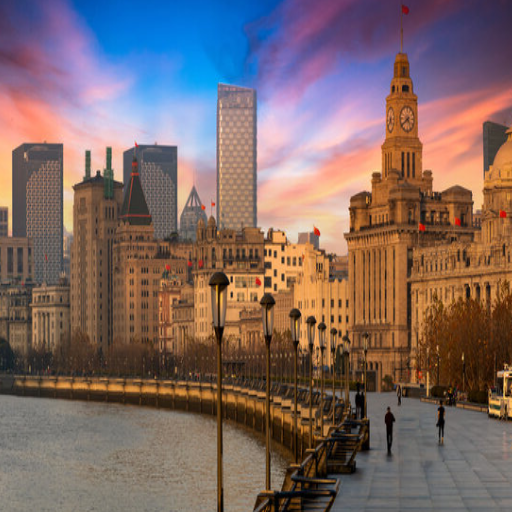
How can I best experience the stunning Shanghai skyline from the Bund?
Location, timing, and angle are crucial to truly appreciate the grandeur of the Shangai skyline seen from the Bund. Nighttime, particularly after sunset, is ideal for illuminating the Lujiazui skyscrapers. The view is most spellbinding between 7 PM and 10 PM.
The Promenade – Walk along the Bund waterfront promenade and take in the sweeping views of the prominent Oriental Pearl Tower, Shanghai Tower, Jin Mao Tower, and other renowned landmarks.
Rooftop Bars and Restaurants – Get a different perspective from the top at rooftop bars and restaurants like Sir Elly’s Terrace at The Peninsula or the Hyatt on the Bund.
Huangpu River Cruise- Try an evening Huangpu River cruise. The experience is breathtaking, with the flickering lights dancing across the water. For an all-encompassing view, try to find cruises that are 45 minutes to an hour long.
In addition to taking pictures and going for a tranquil stroll, the Bund is one of the most incredible places to appreciate the charm of Shangai in a futuristic light.
What historical buildings should I look out for while strolling along the Bund?
As you take a leisurely walk along the Bund, you ought not to miss the following historical sites that truly capture the rich story of architecture in Shanghai:
The Peace Hotel (No. 20), formerly known as Cathay Hotel, is a dazzling Art Deco building built in the 1920s. Its prominent green pyramid roof embodies the Jazz Age’s extravagance.
The Customs House (No. 13) – Neoclassical in design, this building was erected in 1927 and is famous for its clock tower. The clock chimes on the hour mark and every quarter hour after that. This building also had a significant role in Shanghai’s economic boom.
The Bank of China Building (No. 23) – This building competes with the rest of the skyline set up in China, considering that modern meets traditional architectural features are fused in this monument. It was marked as complete in 1937 and reminds the people of China’s golden period in the early 20th century.
The Shanghai Club (No. 2) – Located at no 2, it is known as the Shanghai Club, which dates to 1910. This heavily colonial-style grand monument features the Long Bar, with patrons famous for shots and sharing conversations over drinks. It was recognized as the most elite gentlemen’s club in the region.
These structures are landmarks that signify internationalization, which directly complements Shanghai’s growth and change, uniting Western and Eastern styles in a postmodern complex city.
Are any river cruises available to see the Bund from the Huangpu River?
Indeed, some river cruises are active on the Huangpu River, which provides a great view of the Bund’s skyline. Most cruises last 30 minutes to 2 hours, depending on the selected package. Often, these include options for daytime cruises, sunset cruises, or evening cruises, with the latter enjoying great popularity because of the stunning view of the waterfront buildings illuminated in the evening.
Duration: 30 minutes to 2 hours
Departure Points: The usual docks are Shiliupu Wharf and Zhongshan Wharf.
Timing: Cruises can be done any time, with evening cruises typically starting after sunset.
Features: Most cruises include narration and snacks; some offer clear view decks.
Justification: The cruise routes mostly rotate around the area of Huangpu River, which has a rich historical center on the Bund and modern skyscrapers of Pudong, hence providing smooth riding with uninterrupted views.
To enhance the value of the experience, purchasing tickets in advance during high-season travels is suggested.
What are the must-visit areas in the Former French Concession?
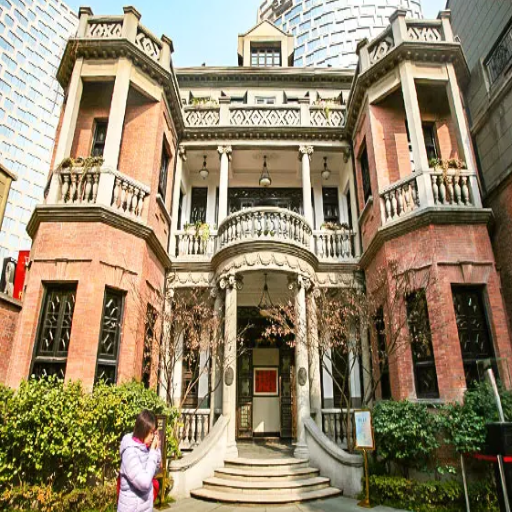
What unique experiences can I find in Tianzifang?
Tianzifang braids history with modernity and creativity, making it a must-see destination within the French concession. The area is famously known for its maze-like alleys with handicraft shops, art studios, and chic cafes. Visitors will find local handicrafts, fascinating souvenirs, and collectible art pieces, making it an ideal place for those looking for something unique. The area is a great cultural hub, too, being the frequent site of pop-up galleries or artisan workshops, which is great for art lovers.
Architecture: The shikumen (stone-gated houses) are preserved to showcase the unique modern and historical Shanghai style.
Visitor Interaction: Pottery making and other hands-on craft work are available in multiple spaces, ensuring an enriching experience.
Culinary Options: The area is famous for Shanghainese food and other international cuisines in quaint-themed cafes.
Justification: Tianzifang merges culture and creative activity, making it great for tourists. The open alleyways and designed spaces help make the region great for casual walking.
How can I best explore the tree-lined streets and architecture of the French Concession?
The French Concession can be more intimately experienced by walking or riding a bicycle through the tree-lined avenues. Walking brings the calmness of a stroll, which allows for a thoughtful examination of the details comprising the history of European-style villas and Art Deco buildings. Biking, on the other hand, will enable you to see more sights while still being able to appreciate everything around you. Some of the areas worth noticing and appreciating include:
Route Planning: The important streets for mapping include Wukang Road, Fuxing Road, and Hengshan Road, which are the most famous buildings located along these tree-lined streets.
Time of Day: The best time is either early morning or late afternoon to avoid high traffic periods so that the streets can be enjoyed through natural light.
Accessories: It is crucial to bring either walking shoes or a dependable bicycle. A camera will help you capture detailed building designs.
Landmarks: For relaxation and cultural appreciation, you may explore the lesser-known cafes and boutique shops in addition to The Former Residence of Sun Yat-sen.
The French Concession can be best appreciated by a person who uses a slow pace coupled with the essential streets and landmarks.
What are the top attractions in Xintiandi?
Xintiandi captures the attention of many due to its timeless Shikumen architectural style and contemporary life. Below are some of the best-known landmarks:
Shikumen Open House Museum: This museum contains preserved Shikumen-style interiors that enable visitors to imagine life in Shanghai in the 1920s.
Trendy Dining and Shopping: Xintiandi has many international restaurants, upscale boutique shops, and stylish cafes, making it great for a luxurious outing.
Taipingqiao Park: A wonderful tranquil park amid the busy district of Xintiandi, tempts visitors to take a walk or relax by the water.
Entertainment Venues: From art galleries to spaces for live music performances, Xintiandi offers a variety of cultural events, providing fun activities for visitors.
Xintiandi combines many historic and modern landmarks, aiding its culture and making it one of Shanghai’s hottest places.
Which ancient sites in Old Shanghai should be on my itinerary?
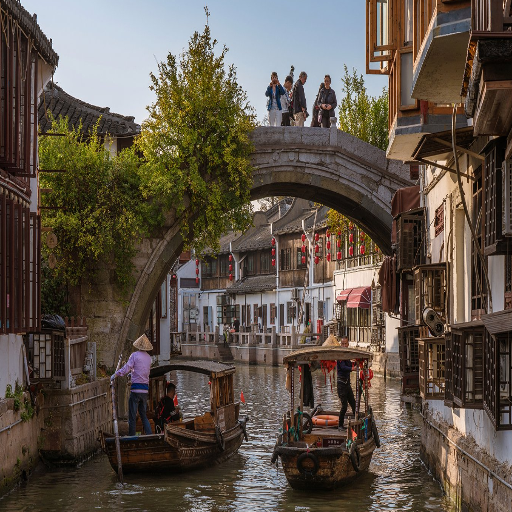
What are the highlights of visiting Yu Garden and the surrounding bazaar?
Yu Garden, or Yuyuan Garden, is an elegantly designed classical Chinese garden that serves as an antidote to the busy lifestyle of Shanghai. Originating during the Ming Dynasty, it covers an area of 5 acres and comprises exquisitely decorated pavilions, koi ponds, and shrimp-filled ponds. Tourists and locals alike can enjoy the magnificent rockeries in the Yu Garden, such as Jade Rock, which is famous for its artistry everywhere in Pompei, a 3.3-meter porous limestone outcrop. It is also said that the Yu Garden was a masterpiece in artistry; the exquisite design in the Yu Garden shows pure artistry. The design of the garden displays ancient Chinese philosophies and Yu Garden tradition.
Antique Bazaar, also called Yuyuan Tourist Mart, has much to offer. The quiet atmosphere is filled with booths allocated for jewelry, souvenirs, and snacks. Chinese street food like soup dumplings and moon cakes are also provided, which adds to the authentic Shanghai taste. Yu Garden, together with the bazaar, offers a blend of cultural and architectural magnificence along with locals, making this place one of the most visited sights in Old Shanghai.
How can I experience traditional Chinese culture at the Jade Buddha Temple?
The Jade Buddha Temple presents an opportunity to experience traditional Chinese culture, Chinese Buddhism, and history. The temple is a place of peace representing traditional beauty and where people can reflect spiritually. It was first built in 1882. The two jade Buddha statues sculpted in Burma were brought to the temple, starting with the temple’s centerpiece. One is reclining while the other is seated; both are crucial parts of Buddhist sculpture. The reclining Buddha represents enlightenment and calm, while the seated one, sculpted from semi-precious stones, reflects deep meditation.
To appreciate the cultural diversity the temple offers, you can join in rituals performed throughout the day or sit back and watch the monks say their prayers and hymns. Where these ceremonies take place or temple life offers a look towards Buddhism. People can also light incense as a meditative act or during prayers at the main altar. This practice is a link to the spirituality of the past. Alongside the warmth of the flame, incense is burned; it creates an atmosphere perfect for reflection.
Furthermore, the temple usually holds other cultural activities and exhibitions, such as Buddhist art exhibitions or calligraphy exhibitions, to teach people about different aspects of Chinese history and religion. Make sure to visit the Sutra Hall, filled with countless scriptures and sacred texts, because it emphasizes the philosophical nature of Buddhism. The temple is simultaneously a work of art, a spiritual haven, and a cultural monument; this is why the Jade Buddha Temple captures the true essence of Buddhism and China’s rich culture, even within a bustling city.
What makes the Shanghai Old Street a unique attraction?
Shanghai Old Street, or Miaoqian Dajie, blends the city’s history and culture. Also, the street captures the modern essence of Shanghai and the past. The city’s rich heritage displayed in the architecture is distinguished by the mixture of Qing Dynasty and early Republican-styled buildings. Ancient craftsmanship is also depicted in the fine wooden handicrafts and lattice windows.
Shanghai Old Street’s charming features include its specialty stores and local markets. Tourists can find many local handicrafts, antiques, silk, tea, and Chinese medicine here. The street also serves as a cultural center for traditional activities like lantern making and paper cutting, allowing tourists to adopt some aspects of Chinese culture.
Moreover, Old Shanghai Street is another tourist attraction because of its food offerings. Tourists can savor local delicacies like xiaolongbao (soup dumplings) and tanghulu (candied fruits) while experiencing the vibrant atmosphere of the street. Combined with this, Shanghai Old Street encapsulates the heart of its tourists by merging historical charm with a multi-sensory experience. A unique blend of cultural preservation suffused with lively city energy marks Shanghai Old Street as a treasured attraction for tourists.
Which museums and art galleries are must-visits for culture enthusiasts?
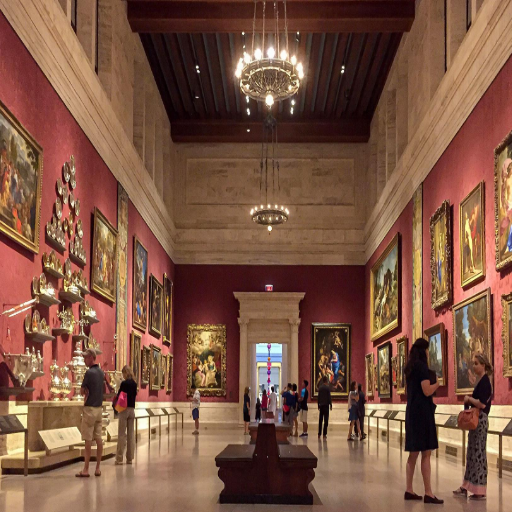
What can I expect to see at the Shanghai Museum?
The Shanghai Museum stands out not just for the sheer amount of art it possesses; in fact, ancient Chinese art comes alive within the walls of this fine institution. Visitors can engage with roughly 120,000 artifacts from China’s history, all spanning different eras, underscoring the country’s rich cultural and artistic heritage. Further enhancing the educational experience, the museum has 11 galleries for permanent exhibits and multiple rooms for temporary exhibitions.
The museum’s Ancient Bronze Gallery allows visitors to view stunning bronze emblems from the Shang and Zhou dynasties. These artifacts represent the pinnacle of ancient artistic skill, and at the same time, they share stories of life’s rituals etched into history and ancient Chinese culture. Another great section of the museum is the Painting and Calligraphy Gallery, which hosts exquisite works of art from the Tang, Song, Yuan, Ming, and Qing dynasties. The unparalleled detail in the strokes speaks volumes about the evolution of Chinese art and literature throughout the ages.
Other distinguished galleries include the Ceramics Gallery, which has more than 500 stunning porcelain and pottery pieces, and the Jade Gallery, which is dedicated to jade carving and validly symbolizes Chinese culture. There are also displays of sculptures and coins from antiquity, Ming and Qing dynasty furniture, and art from various ethnic minority groups. All these collections, combined with the beautiful modern building, make the Shanghai Museum a vital place for those who want to learn about the history and art of China.
How does the M50 art district showcase Shanghai’s contemporary art scene?
On Moganshan Road is M50, an arts district featuring studios and galleries that symbolize Shanghai’s innovative contemporary art scene. This complex evolved from an industrial zone into a collection of various art studios and galleries by fostering both local and foreign partnerships. This transformation showcases how Shanghai is a city of remarkable evolution as it moves towards a more culturally sophisticated future by blending its innovative industrial past. This district has seemingly integrated a large variety of contemporaneous art forms like oil paintings, photography, multimedia installations, and other experimental art forms.
As compared to other areas, M50 is more inclusive and international. It is home to Chinese and foreign artists, blending different cultural approaches to art. In addition, several smaller galleries like ShanghART Gallery and Vanguard Gallery showcase advanced pieces of art, while lesser-known galleries allow new artists to establish themselves. With this combination of renowned and fresh talent, this area seems to have a never-ending creative changing atmosphere. Furthermore, regular events like artistic performances, gallery openings, workshops, etc., encourage more locals and tourists to visit and showcase Shanghai’s prominence in contemporary art.
Furthermore, M50 integrates technology and experimentation in a modern fashion. Many of the district’s galleries engage with emerging forms of digital art, including interactive multimedia installations and virtual reality showcases, gaining attention from the youth and further stretching the limits within which art is traditionally confined. While keeping pace with creativity, M50 is a primary shaper of Shanghai’s cultural identity, reconciling heritage with contemporaneity and thus underpinning the city’s artistic modernity.
Are there any lesser-known museums that offer unique insights into Shanghai’s history?
Indeed, there are some hidden gems in Shanghai which offer great insight into the heritage and history of shanghai, one of them is the Shikumen Open House Museum situated in teh Tianzifang. The museum describes the Shikumen style of architectural design and the daily lifestyle of Shanghainese in the days gone by. The exhibits feature period rooms with furnishings, utensils, and photographs of everyday life from the first half of the 1900s. The enormity of the museum, coupled with its daily life focus, enhances the intimacy where the visitor attends to the city’s significant, deep history.
The Propaganda Poster Art Center is another gem of a hidden museum located in a residential block. This privately owned museum curates a remarkable collection of propaganda posters from the Mao period, covering the period from 1950 to 1970. Visitors greatly appreciate the political and sociological change by analyzing the colorful graphics and catchphrases. The museum includes props like newspapers and stamps, which help people understand the ideology better. This marvelous place is known for its use of art and ideographs to serve the public, and it is ideal for anyone interested in modern-day China.
From a technological point of view, both museums are above the average in education culture, accessible through limited and expertly categorized collections. The Shikumen Open House Museum uses spatial design to recreate actual historic surroundings and capture people’s imaginations about the development of urban Shanghai. However, the Propaganda Poster Art Center uses its proprietary archival method to display delicate posters in glass boxes set at the appropriate temperature. These arrangements make the posters accessible while ensuring their long-term preservation. These factors show the singular devotion each of them has to conservation and authenticity, increasing the cultural heritage of Shanghai.
What are the top shopping and entertainment destinations in Shanghai?
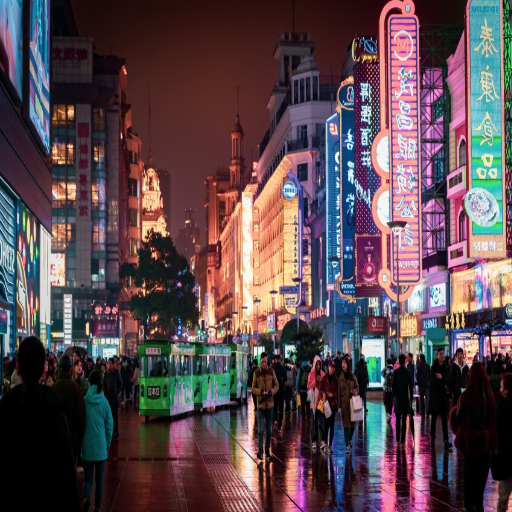
What makes Nanjing Road a shopper’s paradise?
A visit to Nanjing Road guarantees an incredible shopping experience because of its extensive history, modernity, and variety all in one place. This central retail hub is in the center of Shanghai and stretches over three miles long, divided into traditional and modern eastern and western parts. Walking on Nanjing Road immediately reminds me of the old type of department stores we have, like the Shanghai No. 1 Department Store. Still, unlike those, it is located next to luxury flagship stores of Gucci and Louis Vuitton. This incredible blend draws many people worldwide, making Nanjing Road an all-in-one destination.
Nanjing Road incorporates accessibility and courtesy modifications, which make it easy to use. The eastern section of Nanjing Road, which is designated for pedestrians only, gives shoppers a carefree experience without worrying about traffic. The street is also fully equipped with modern lighting and digital screens, creating a lively atmosphere, particularly in the evening, when the area comes alive. Other notable features include the highly accessible central metro stations, such as Line 2 and Line 10, making visiting easier for the general public and tourists. These features, as well as the previously mentioned ones, are constructive for increasing footfall for retail businesses.
Nanjing Road also elevates its services by providing captivating entertainment, making it unique. Besides shopping, visitors can enjoy several attractions, including historic sites like the Grand Theatre and street performances. There is significant foot traffic daily due to the festive and seasonal cultural activities open to all visitors regardless of age. With a diverse range of cuisines, from street vendors to fine dining restaurants in five-star hotels, Nanjing Road has become a remarkable destination that offers more than shopping but a cultural and sensory experience. Shanghai is well positioned to be the leading shopping destination with an entertainment outlet, and this blend of features amply explains its status.
How can I experience Shanghai’s vibrant nightlife scene?
Part of the thrill of visiting Shanghai is soaking up the local culture through its dynamic and colorful nightlife. As for me, the stunning views from The Bund paired with upscale bars and delicate rooftop lounges are an excellent start to my nights. While having expertly crafted cocktails, the vast Pearl Tower, alongside lavish skyscrapers, is an exquisite backdrop during the day. This area is a must-visit for anyone looking for a sophisticated evening, as it seamlessly blends modern elegance with historic charm.
The historic Xintiandi district is a personal favorite for nights out that are more energetic and lively. With its trendy clubs and live music venues, this area is incredibly well known. The Xintiandi district is rich in modern entertainment, making it a great fusion of contemporary and traditional Shanghai. When the sun goes down, the streets become a bubbling cauldron full of crowds, vibrant colors, and rich sounds. Being located in the center of the city, coupled with brilliant connectivity and public transportation, makes it an outstanding nightlife destination.
If I want something other than modern, the night markets like the Wujiang Road Food Street offer an encapsulating feast with their multitude of food booths and late-night dining establishments. On a cultural level, these places capture all the senses as they offer authentic food from Shangai cuisine alongside energetic atmospheres. From a technical standpoint, the region is easy to navigate because of the well-established public transport, great streets, and extended business hours. Overall, Shangai caters to everyone’s preferences regarding nightlife, creating an experience unlike any other and ensuring no one will forget the lavish culture.
Is it worth visiting Shanghai Disneyland, and what makes it unique?
Without a doubt, Shanghai Disneyland is a destination of choice for anyone who enjoys the wonderful stories and delightful rides that Disney offers. Unlike other Disney parks worldwide, it integrates elements of Chinese culture alongside Disney magic. The park has exclusive attractions like the world’s largest Disney castle, Enchanted Storybook Castle, and TRON Lightcycle Power Run. These make it the ideal vacation spot for families, couples, or individual travelers who want to discover a magical world unlike any other.
One of the reasons I found Disneyland Shanghai so amazing is the use of new technology in park features and attractions. For instance, the TRON Lightcycle Power Run coaster uses incredibly advanced construction techniques to give riders an exhilarating futuristic experience. The highly sophisticated crowd control features are offered in the park, including the ability to book rides through the Disney Premier Access service. Disneyland Shanghai’s premier layout allows guests to experience all seven lands freely without worrying about congestion. This, combined with the spacious design, means fantastic visitor flows are maintained even with a large attendance.
In terms of design, Shanghai Disneyland is complemented by thoughtful infrastructure and a high level of connectivity. The park is situated in the Shanghai International Tourism and Resorts Zone, which is served with metro, private car, and shuttle access. Hotels, restaurants, and shops are also available within the park, making it a more complete travel location. Guests’ experiences are also improved by the park’s extended hours of operation and higher-than-normal levels of park cleanliness. From Disneyland’s state-of-the-art rides to its cultural and service exceptionalism and everything in between, this awe-inspiring amusement park provides a once-in-a-lifetime experience for every visitor.
Frequently Asked Questions (FAQs)
Q: Which landmarks in Shanghai do you recommend the most?
A: Some attractions you must see while visiting Shanghai include Shanghai Yu Garden (Yuyuan), Yu Garden (Shangai Tower), Shanghai Tower, The Bund, Pudong’s Skyline, Nanjing Road, and the Shanghai World Financial Center. These famous places combine modern and historical, so one of the parts of any tour to Shanghai is remarkable.
Q: Should I take a Zhujiajiao day trip from Shanghai?
A: Definitely! Zhujiajiao is a stunning water village called the “Venice of Shanghai.” It is a great day trip destination not far from the city center. This town features ancient Chinese culture with its lavish canals, stone bridges, and nicely preserved architecture of the Ming and Qing dynasties. It is a dream getaway from the world’s busiest city.
Q: What places in Shanghai can explore the modern and traditional blend?
A: The Old City of Shanghai, with the Yuyuan Garden and its bazaar, is one of the prominent landmarks to visit and experience the classic Shanghai. Head over to Pudong’s Lujiazui district for a dose of the modern era. The Former French Concession has traditional Shikumen Houses, which are a must-see. For something contemporary, visit the M50 art district. This combination allows for the utmost perspective on Shanghai’s development.
Q: In what ways is the Shanghai Tower unique, and would it be worth visiting?
A: The intricacy of the internal design, alongside its external appearance, makes the Shanghai Tower a breathtaking work of modern engineering. This structure is the tallest building in China and second in the world, alongside the Beijing Chinese City Building. The observation deck on the 118th floor provides mind-blowing city views. The iconic skyline of Shanghai wouldn’t be the same without the sustainability features and the twisted shape of the Shanghai Tower. It deserves a visit due to the panoramic views and the breathtaking experience of one of the tallest skyscrapers in the world.
Q: Are there any places of interest to art lovers in Shanghai?
A: Visiting the Shanghai Museum is necessary for people who enjoy ancient Chinese arts and artifacts. Also, the China Art Museum has a great collection and is located in the building formerly known as the China Pavilion in the Expo 2010. M50 Creative Park and Yuz Museum are also good places to visit for modern art. The Power Station of Art, the first contemporary art museum administered by the government in China, features modern art from both within the country and abroad and is a wonderful place to visit.
Q: What time of the year do you recommend planning a trip to Shanghai?
A: Spring, March through May, and autumn, September through November, are best for visiting Shanghai. During these times of year, the city experiences mild and comfortable weather, which is suitable for visiting outdoor sites. April is also a lovely month with ideal temperatures and splendid spring flowers. However, Shanghai is a year-round destination with something unique every season. The city will have even more appealing features and better infrastructure by 2025.
Q: Tell me about some must-see landmarks on East Nanjing Road
A: One of the most striking features is that Nanjing Road East is one of Shanghai’s busiest and leading shopping streets. It serves as a major tourist attraction as well. One will come across modernized and historical buildings while walking along this road meant for pedestrians. Notable landmarks are the Fairmont Peace Hotel, which has a green pyramid-like top, the Shanghai No.1 department store, and the Swatch Art Peace Hotel, which has beautiful Baroque architecture. This road also leads to the bund, with amazing views of Kubota and the Oriental Pearl Tower.